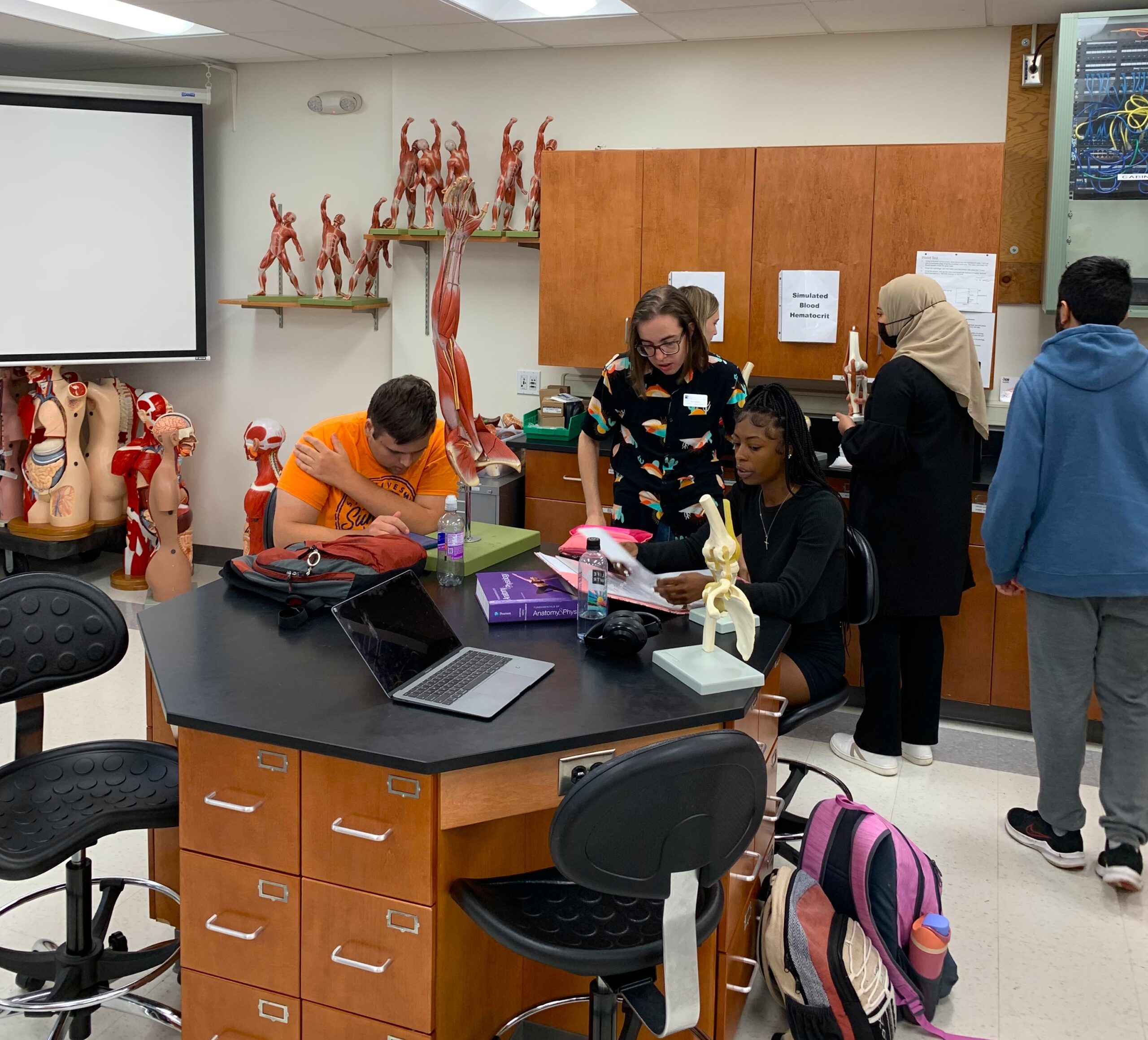Analyzing the crime data from the Meramec Campus with Professor Ruth Eilerman
BY: JACOB POLITTE
Managing Editor

Editors Note: This article was originally published in the Nov. 4, 2021 issue of The Montage. This online version of the article features additional quotes from Police Chief Benjamin Talley that cannot be found in the print version.
Saint Louis Community College (STLCC) recently published its 2021 Security and Fire Safety Report. This report, published in accordance with the Clery Act of 1990, details the statistics of all crimes and incidents reported that are associated with the college over the previous three years; the 2021 report details data for 2018-2020.
The 155-page report has crime and incident statistics that cover every single STLCC campus; specific data relating to the Meramec Campus can be found on pages 108-119 of the report. Mostly due to the pandemic forcing the majority of classes off campus for nearly nine months of the year, crime data for the 2020 year is non-existent on the Meramec campus.
The Clery Act was enacted four years after the brutal rape and murder of Jeanne Clery in her dorm on the campus of Lehigh University in 1986. The university had tried to hide the incident, and more than three dozen other violent crimes from the surrounding community. Since it’s passage into law, the Clery Act requires colleges and universities to report campus crime data by Oct. 1 of each year, support victims of violence, and publicly outline the policies and procedures they have put into place to improve campus safety.
““The Clery Act is a consumer protection law that is published yearly with a purpose to provide transparency around campus crime, policy, and statistics to foster campus safety,” said STLCC Police Chief Benjamin Talley. “St. Louis Community College provides a safe environment for learning at all of our locations. I believe St. Louis Community College’s statistics speak for themselves and cannot comment on other Colleges and Universities in the area. St. Louis Community College is transparent in providing information to our community to foster campus safety. I encourage anyone to report any suspicious or criminal activity they observe on St. Louis Community College property to the St. Louis Community College Police Department at 314-539-5999.”

Professor Ruth Eilerman has worked at the college as a Criminal Justice instructor since 2007. She also had a previous background in law enforcement, working mostly in the corrections field in the St. Louis and Denver areas.
“There’s a lot more requirements on colleges now to report crime,” Eilerman said. “They used to be kind of be able to be autonomous on how they handled incidents on campus. It was in their best interest to downplay crime, because it made parents feel better about sending their kids there. Colleges now have to report crime on their campuses in a way they didn’t before.”
She continued, “We can’t really just pretend that things aren’t happening here, we can’t sweep things under the rug. If there are crimes going on, as long as the students are reporting it, then it is showing up in official data. But if it’s small petty crimes, then there’s a good chance that students don’t report things.”
Within her classes, Eilerman often talks about what factors may play a part in the commission of a crime, and why some crimes may not necessarily be reported. Despite the data not showing much of any kind of crime, Eilerman said that the lack of data isn’t an indicator that the campus is totally crime free.
“I’m sure that there’s some larceny that goes unreported,” she said. “If I had to guess, that would be it. I don’t think that violent crime goes unreported here.”
To elaborate further, Eilerman pointed to a hypothetical example that she talked about last year. “I think that if I go out and my car’s unlocked in the parking lot and something’s missing, I may not report that.”
She said that students may not necessarily feel like it was a big deal, or that the loss might not have been big enough.
“Usually, it’s because the dollar amount isn’t very high,” she said. “And they don’t feel like it’s enough […] of a problem.”
She also reiterated that STLCC employs post-certified police officers at all of their campuses.
“I’m sure some people here don’t know that we have actual police officers,” Eilerman said. “Some people just may not know where to go with it, and then they just don’t bother.”
Still, campus crime rates at Meramec appear to be relatively low over the years. Last year when “The Montage” spoke with her about the 2020 Security Report, she attributed the relatively low crime numbers to a lack of student housing for STLCC, among other factors. This is a belief she still holds.
“This is also a low-crime area,” Eilerman said. “The biggest thing is that [students] don’t have drinking parties here, and that you guys leave when you’re done. Just [the Meramec campus] being a commuter campus makes a gigantically big difference.”
When speaking about the lack of data, Eilerman said the absence of the majority of students on campus during the first year and a half of the COVID-19 pandemic is a large contributor.
“There wasn’t anybody here last year,” she said. “So there weren’t really any potential victims, there weren’t big targets here.”
The full report is available to view and to download on the STLCC website. You can also request a paper copy from STLCC’s Security Department located at the Corporate Campus in Bridgeton, or by calling (314) 539-5199.











